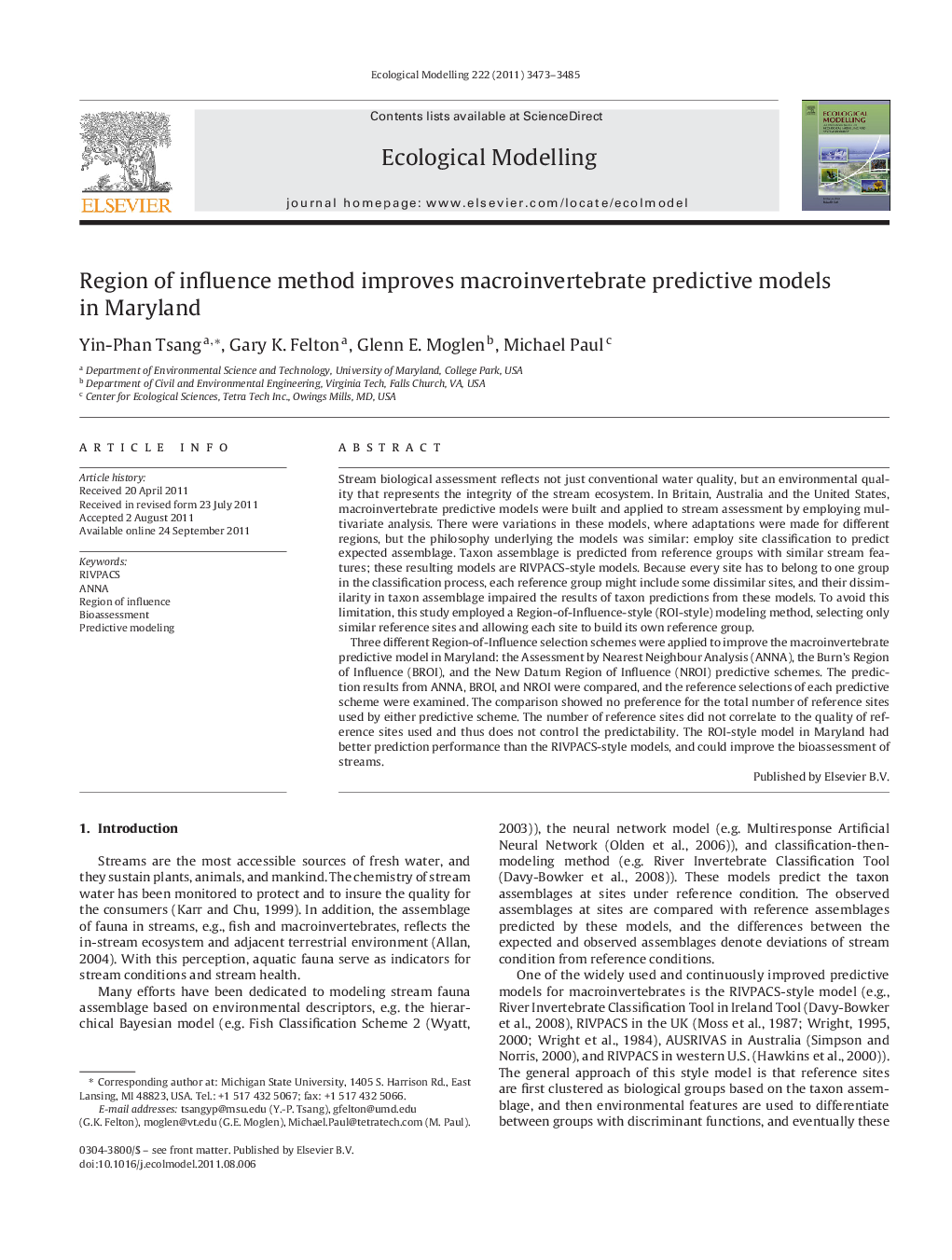| Article ID | Journal | Published Year | Pages | File Type |
|---|---|---|---|---|
| 4376806 | Ecological Modelling | 2011 | 13 Pages |
Stream biological assessment reflects not just conventional water quality, but an environmental quality that represents the integrity of the stream ecosystem. In Britain, Australia and the United States, macroinvertebrate predictive models were built and applied to stream assessment by employing multivariate analysis. There were variations in these models, where adaptations were made for different regions, but the philosophy underlying the models was similar: employ site classification to predict expected assemblage. Taxon assemblage is predicted from reference groups with similar stream features; these resulting models are RIVPACS-style models. Because every site has to belong to one group in the classification process, each reference group might include some dissimilar sites, and their dissimilarity in taxon assemblage impaired the results of taxon predictions from these models. To avoid this limitation, this study employed a Region-of-Influence-style (ROI-style) modeling method, selecting only similar reference sites and allowing each site to build its own reference group.Three different Region-of-Influence selection schemes were applied to improve the macroinvertebrate predictive model in Maryland: the Assessment by Nearest Neighbour Analysis (ANNA), the Burn's Region of Influence (BROI), and the New Datum Region of Influence (NROI) predictive schemes. The prediction results from ANNA, BROI, and NROI were compared, and the reference selections of each predictive scheme were examined. The comparison showed no preference for the total number of reference sites used by either predictive scheme. The number of reference sites did not correlate to the quality of reference sites used and thus does not control the predictability. The ROI-style model in Maryland had better prediction performance than the RIVPACS-style models, and could improve the bioassessment of streams.
► We adapt a Region-of-Influence-style modeling to macroinvertebrate predictive models. ► The concepts and results of three predictive models were examined for superior. ► No preference was shown for the number of reference sites used by different schemes. ► The number of reference sites did not correlate to the quality of reference sites used. ► The ROI-style model in Maryland performed better than the RIVPACS-style models.
